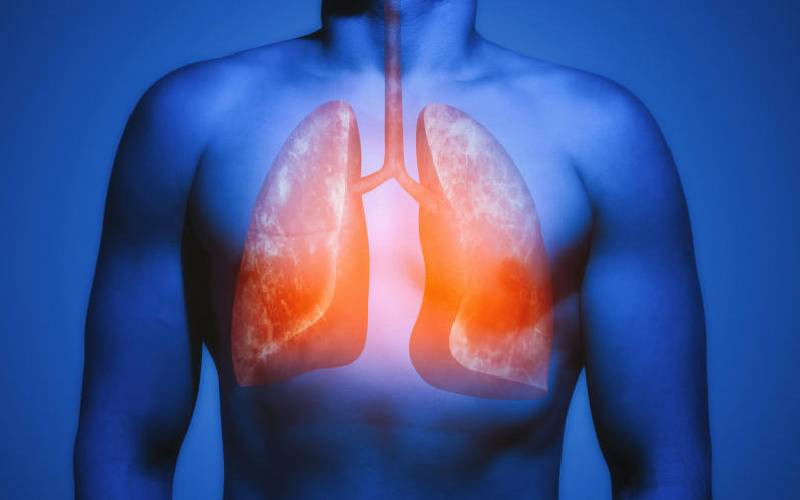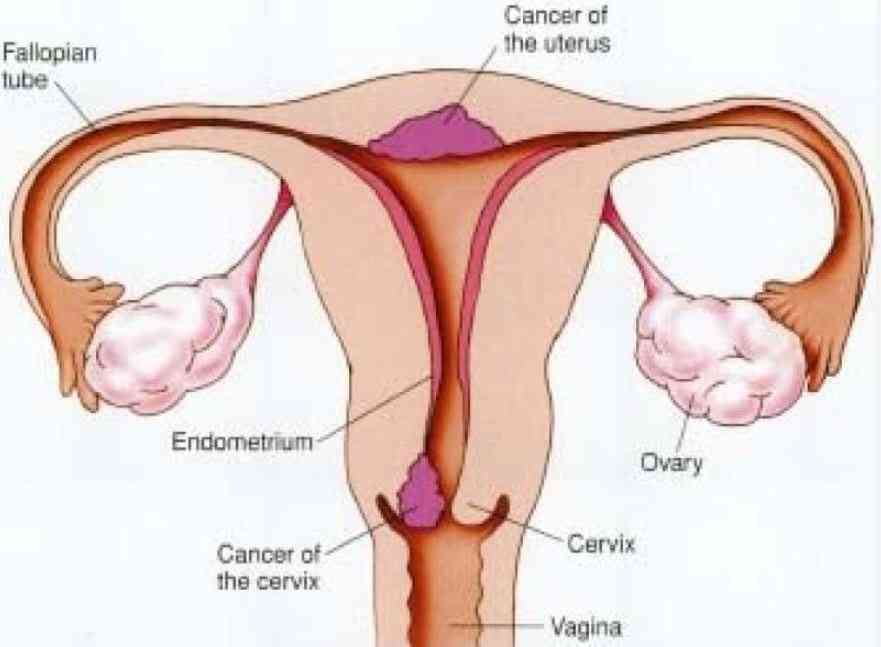
Lower respiratory infections persist as the fourth leading cause of global deaths, according to a report by the World Health Organisation (WHO).
On the other hand, the death rates have significantly decreased. In 2019, 2.6 million people died from it, 460,000 fewer than in 2000.
According to the Centres for Disease Control, most respiratory infections, especially those of the upper respiratory tract, are mild. Lower respiratory tract infections, particularly pneumonia, can be more severe. Lower respiratory tract infections are more likely than upper respiratory tract infections to cause chest pain, dyspnoea, or fever.
Dr Andrew Owuor, a respiratory specialist, highlights that the most common types of respiratory infections are predominantly caused by viruses.
"Common respiratory tract infections are viruses, so viruses will probably take up the biggest percentage of contributors to respiratory tract infections," Dr Owuor explains.
"The challenges with respiratory viruses are that detection sometimes may not be easy, so many people end up being treated automatically for bacterial infections. But the data shows that the majority of the infections are usually due to viruses."
- WHO maintains mpox alert amid West Africa surge
- WHO report reveals progress in tobacco war but gaps remain
- Missed vaccination risks a child's life as eradicated diseases return
- Trump pulls US from World Health pandemic reforms
Keep Reading
Using the recent Covid-19 pandemic as an example, Dr Owuor focuses on how it affected adults, the elderly and people with underlying health conditions while sparing children.
"We've just come out of the SARS, COV 2, or Covid-19 pandemic, which caused a lot of havoc and a lot of deaths across the board," he notes.
"However, children were spared, so this means they affected adults, the elderly and people who have what you call comorbidities or people who are living with other chronic medical conditions."
Dr Owuor emphasises that the influenza virus is a common cause of seasonal flu and draws attention to other viruses that are common in children and the elderly, like the adenovirus, which is known to cause significant lung damage and is potentially fatal.
"Of course, bacteria also cause respiratory tract infections. The most common would be pneumococci bacteria," Dr Owuor explains, "There are other rare types, Haemophilus influenza in children and Legionella, but those are not very common. The most common one would be what they call streptococci or pneumococci and pneumonia would cause a respiratory tract infection," he says.
Dr Owuor indicates why viruses are at the top of the list, stating, "Viruses contribute about 40 per cent; bacteria will only be about 20-25 per cent. And then the rest that is not so common-take 20 to 30 per cent," he says.
Regarding transmission, Dr Owuor explains that respiratory infections usually spread through airborne or droplet transmission.
"The spread of respiratory infections is usually airborne or droplet. One person who's infected may either cough when they are talking; they'll be shedding the organisms and somebody else would usually inhale other organisms and end up with a lower respiratory tract infection through their nose or their mouth and that's how you usually acquire it," he adds.
Symptoms of lower respiratory tract infections typically involve coughing, fever, muscle pains, loss of appetite and occasionally shortness of breath.
"So if you have a cough, fever, shortness of breath, or some joint muscle pains, then you want to suspect a low respiratory tract infection," Dr Owuor points out.
"Children under five are at the highest risk and adults above the age of 65 usually bear the largest brunt," Dr Owuor explains.
"For children under 5, the immune system is not mature enough to be able to fight against all these infections. So that's why they bear the largest brunt."
"The other group would be patients who are elderly because there's something called an immunological sinus. Your immune system ages just like you do and your ability to fight off infections diminishes with age," he adds.
Dr Owuor stresses the highly infectious nature of lower respiratory infections, including tuberculosis, due to their airborne or droplet-based modes of transmission, enabling easy and widespread disease transmission.
He states, "One person can transmit to very many people and for TB, it can be as far as even one year. So it may not be the person you met last week or last month. Maybe the person you met six months ago is the one who spread to you. Unlike these other low respiratory infections, the contact period is any day between 3 and 14 days."
"One of the preventive actions that are straightforward is getting a vaccine. There's a vaccine for flu that is recommended annually for every person," Dr Owuor elaborates.
"It's only that it's not free, but it's directly recommended, even by the government that you should get an annual flu vaccine to try to reduce the effects of the flu on yourself. And also the fact that if more people are vaccinated, then there's that whole element of hard immunity."
"For example, if you are a family and you and your brothers are all vaccinated, then by and large you have protected your parents because you are likely to get this infection from you or your siblings. And now that all of you are vaccinated, you protect the people; who are most vulnerable," he notes.
"When it comes to prevention, human beings tend to be a bit selfish. They only think about themselves, but sometimes when you prevent yourself, you're also preventing other people from getting infected. And that's the whole idea about vaccination. It's not only about you; it's about all of us."
"And if all of us can do it, then we can make life for these organisms a bit more difficult because they cannot find the right host for them to be able to attack."
Besides vaccinations, Dr Owuor discussed other preventive measures, such as good hygiene habits like washing hands and maintaining sanitation.
Dr Owuor also mentioned the availability of vaccines for Covid-19, influenza and pneumonia in Kenya. Specifically, he noted that the pneumonia vaccine is recommended for children and adults with chronic medical conditions like chronic respiratory or cardiac issues, diabetes, HIV positive and individuals above the age of 65.
"But the pneumonia vaccine is given to children and also to adults who have chronic medical conditions. So if you have a chronic respiratory condition, chronic cardiac condition, you have diabetes, or you're HIV positive," he explains, "then you also qualify for the pneumonia vaccine and then the other group are usually persons who may not have any comorbidities, but their age is above 65."
"If you quite well remember, given the COVID pandemic, using a mask was mandatory to try to forestall the spread of respiratory tract infections because we know that using a mask reduces transmission. It may not be 100 per cent, but it's one of the strategies for reducing transmission for these organisms," Dr Owuor says.
"The effective treatment will usually be for bacteria. If you're able to identify that it's a bacterium causing the lower respiratory tract infection, then antibiotics would be able to cure you of your bacterial infection," Dr Owuor elaborates.
"Unfortunately for viruses, by the time you have symptoms, the viral phase is already gone. And that's why it is usually just symptomatic treatment. So for the majority of the lower respiratory tract infections, take something for the fever, increase the amount of flu that you're taking, keep warm, rest and have some bed rest so that the body can contain the infection," he says.
Dr Owuor emphasised the challenges in treating viral infections due to the lack of definitive treatments available once symptoms manifest.
"Viral infections may not have a definitive treatment, although if you are in contact, we can give you treatment before the symptoms start. But once the symptoms start usually a bit late," he says.
Dr Owuor concluded by cautioning against the misconception that all lower respiratory tract infections stem from bacteria.
"Unfortunately, most of the lower respiratory tract infections are not caused by bacteria. So you shouldn't run to just go and get an antibiotic because you're coughing or you're having some sore throat or you're having some chest pain and some chills because antibiotics basically will not work."
 The Standard Group Plc is a multi-media organization with investments in media
platforms spanning newspaper print
operations, television, radio broadcasting, digital and online services. The
Standard Group is recognized as a
leading multi-media house in Kenya with a key influence in matters of national
and international interest.
The Standard Group Plc is a multi-media organization with investments in media
platforms spanning newspaper print
operations, television, radio broadcasting, digital and online services. The
Standard Group is recognized as a
leading multi-media house in Kenya with a key influence in matters of national
and international interest.











